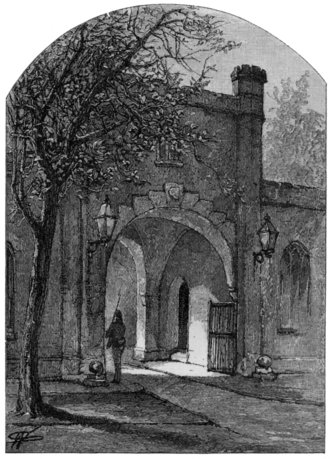|
Then comes a narrow-gauge with bright hopes, the Pittsburgh Southern,
leading southwardly. The Castle Shannon, narrow-gauge, brief but busy,
completes the list in this quarter. In Allegheny is the terminus of
the West Penn road, tributary to the great Pennsylvania Central, and
leading up the Allegheny Valley. The Pittsburgh and Western complete the
list; it is narrow gauge and flourishing, with very bright prospects.
In all, fourteen busy railroads—fourteen arms that reach far and
wide, fattening Pittsburgh, and growing the while in length, value,
and importance.
Of Pittsburghers it may be said
that their industry is only equalled by their demand for daily news,
warm from the wires and press. To gratify this worthy craving they
support more newspapers, daily and weekly, than are printed in any
city of its population in the country. Ten daily papers, six morning
and four evening, appear upon her streets every twenty-four hours,
and their combined circulation is something wonderful in its way.
This epitome of the Smoky City's
attributes would be in a measure incomplete without a reference to one
quiet spot in Allegheny Cemetery, and without a passing tribute to the
memory of the Pittsburgher whose body reposes in this green and shaded
nook in the city of the dead. Far-reaching as are the industries of the
busy city that surrounds the spot with endless flame and ceaseless turmoil,
and wide-spread as is the fame of her handiwork, yet here slumbers one
whose brief life had a subtler potency, and whose melodies won for their
young composer a world-wide fame.
Stephen C. Foster was born, in what is
now a part of Pittsburgh, July 4, 1826, and died in New York January 13,
1864, at the early age of thirty-seven years. The popularity attained
by his compositions may best be judged by noting the following figures.
Of "Old Folks at Home" there have been sold 300,000 copies;
"My Old Kentucky Home," 200,000 copies;
"Willie, we have missed you," 150,000;
"Massa's in the cold, cold ground," and "Ellen Bayne," 100,000 each;
|

THE [Alleghany] ARSENAL.
"Old Dog Tray"—in six months—75,000 copies.
Of "Old Uncle Ned," "Oh! Susannah," and other equally popular works by
this young Pittsburgher it is difficult to give the number printed, as
Foster did not copyright them. The brain that conceived and the hand
that wrote these melodies have long been crumbling to dust, but their
work is found in thousands of American and European homes. There is
today not a music house in the country that does not regularly order
of Foster's
|